From their arrival in 1849 until George M. Pullman began to build his utopian Town of Pullman in 1880, the Dutch settled the Lake Calumet Region. To this day, these early settlers have left their impression on the area, and vice versa: an exhibit on Roseland is currently on display at the Eenigenburg Museum in the Netherlands commemorating those early settlement years.
In 1880, George Pullman acquired a little more than four thousand acres as the site for the fulfillment of his visionary plan for a utopian factory town. Thus began what, for all intents and purposes, was the world’s most perfect worker’s town for a period of about fifteen years. Scandinavian and Germanic immigrants were the first to benefit from the Town of Pullman’s wide landscaped streets, indoor plumbing, manicured lawns, daily garbage pick-up and company-maintained houses. Despite these benefits, they dealt with a rent that required a six percent return for Mr. Pullman’s investors, and increased cost of water and gas utilities. Once economic troubles hit, George Pullman refused to lower rents despite lowering worker’s wages and work hours, causing an unforgiveable rift between workers and company officials.
Pullman has been on a road to restoration, revision, and reconstruction since the early 1970s, when an ill-begotten plan was formulated to bulldoze Pullman in order to create a “cash-cow” industrial park. Since those early days, Pullman has become a beacon of hope for the surrounding communities of Roseland and Kensington.
The three areas suffered from white flight and realtor redlining, but many of Roseland’s current residents are looking toward a new horizon for Roseland where standards are maintained willingly, with neighbors respecting and supporting each other. In addition, these residents are part of the larger picture of the Pullman National Monument. Almost six hundred residents from the Pullman, Roseland, and Kensington neighborhoods showed up in support of Pullman’s designation as a part of the National Park Service, a number that National Parks Director Jonathan Jarvis noted during his speech and promised to take back to Washington.
Times and people may have changed, but some things do return to their origins. In an 1880s photo of the interior of the Arcade Shopping Center that George Pullman provided for his residents, a banner can be seen hanging above shoppers: “To the people of Pullman Roseland Kensington – save time & car fare – by buying your goods at the Arcade Mercantile Company.” To this day, the three communities continue to form a common bond for their future well-being.
CJ Martello is a Pullman resident who lives on Saint Lawrence Avenue. He writes a regular column for FraNoi.com entitled “Petals from Roseland” and is the director/actor of a one-man-show on George Pullman.
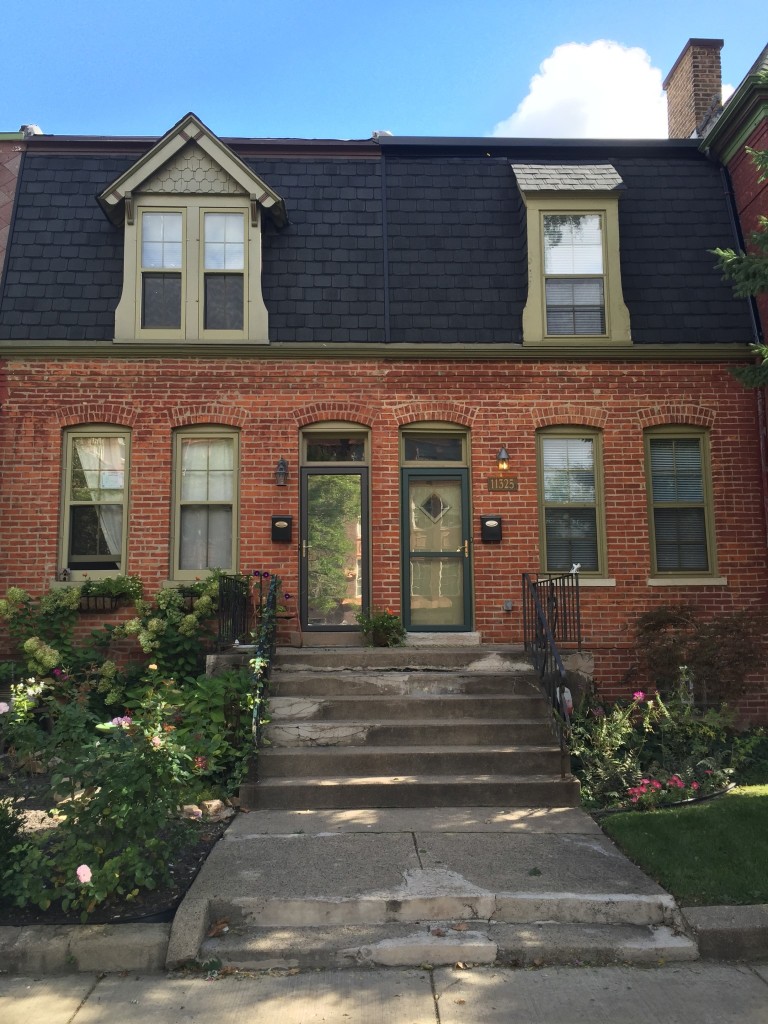
Best Doors and Alleyways
Once dubbed “The World’s Most Perfect Town,” today’s Pullman still exudes an otherworldly, fairytale aura. As if transplanted from a storybook, the neighborhood’s streets are the paths of a labyrinth whose every turn unveils a new marvel; an abandoned clock tower, a garage-door mural, crumbling architectural relics. Tall, thin doors mark the nineteenth-century façades in a variety of colors and styles. Green staircases spill out from deep oak double doors, ivy wraps around a rusty red entryway, and diamond cutouts stud the window panels of an emerald door. When renovating their homes, residents are required to abide by specific requirements so that these doors, staircases, and windows continue to resemble the original model town of Pullman. The alleyways and backyards, however, are completely unregulated; a stroll between Saint Lawrence and Langley reveals that, as a result, they serve as blank canvases for residents’ and local artists’ creative output. Weathered and slightly skewed, a collection of oil paintings embellish the brick wall of one alleyway on 112th Street closer to Saint Lawrence. A miniature Zen garden complete with sand, pebbles, and a rake sits underneath the paintings, accompanied by a sign that invites passers-by to “Zen at your own risk.”
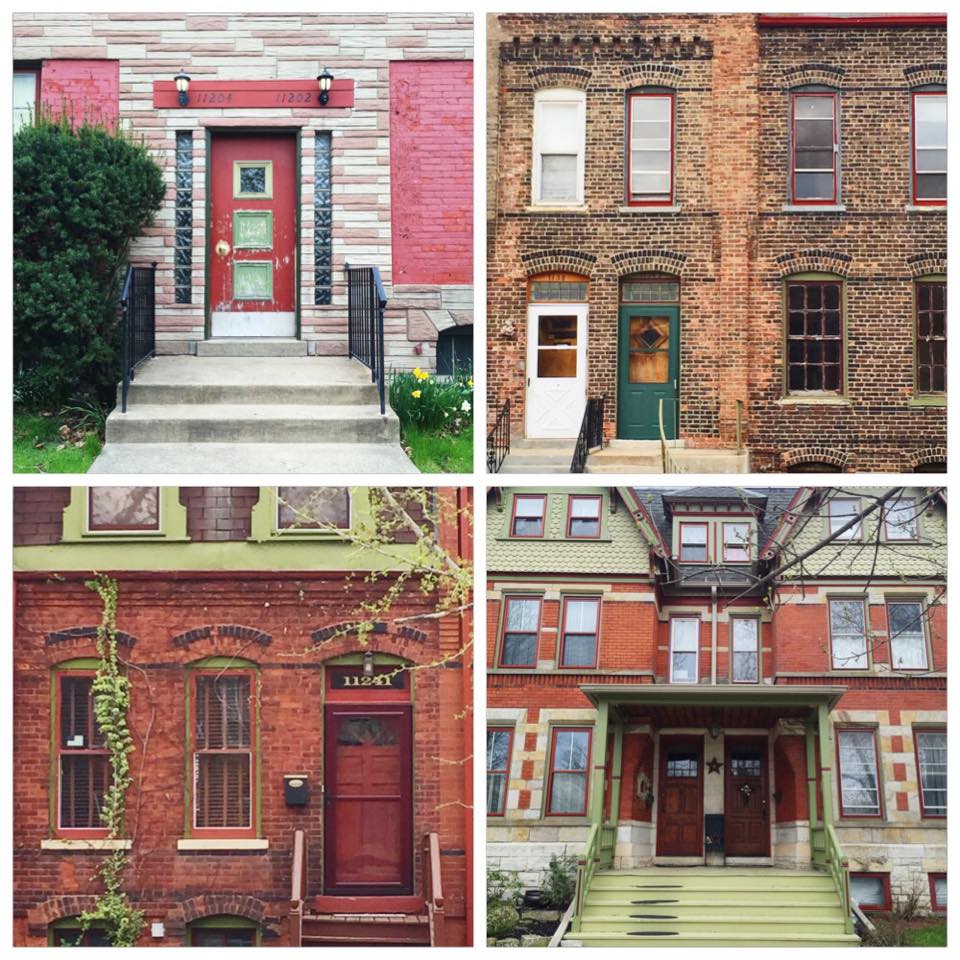
In addition to these, long stretches of gray back alley are interspersed with lively garage door murals. Originally from Los Angeles, artist Ian Lantz now resides in Pullman and has painted a number of his neighbors’ doors with vibrant designs inspired by folk art. “We all put up posters and stickers in the back alleys and on the telephone poles,” says one Pullman resident. “It’s just a Pullman thing.” “Alleyway art parties” often organically spring up when residents congregate to look at the murals and paintings. Art is steadily sneaking onto every corner of the town; in 2014, Mathew Hoffman, of the “You are Beautiful” campaign , mounted a massive, twelve-foot-tall installation of the words “Go For It” amidst the skeleton of Pullman’s historic Market Hall at the intersection of 112th Street and Champlain. Although the installation was slated to stand for only three months, the words have been encouraging locals for over a year now. In order to draw in more artists like Lantz and Hoffman, PullmanArts is currently partnering with ArtSpace, Inc. and the Chicago Neighborhood Initiative to develop a large-scale project to convert historic structures into working and living spaces for artists. Due to increased artist interest in relocating to Pullman, the organization hopes to create forty artist rental units as well as additional communal flex spaces for exhibitions and gatherings. The ever-changing alleys, murals, and arts spaces of Pullman prove that the neighborhood is not wedged permanently in the past; rather, the community is building from its rich architectural history to catalyze creative development.
For more information on PullmanArts, visit pullmanarts.org (Amelia Dmowska)
Best Fried Hoops of Dough
Old Fashioned Donuts
Two ceiling fans spin lazily over the stark interior of Old Fashioned Donuts, sending a light breeze over the dozen or so people waiting patiently in line. The store is warm and smells comfortingly like sugar and yeast. Donuts aren’t all the place serves, but few people seem to be buying anything else. There are over a dozen varieties at any given time, but none resemble the perhaps overly creative (and certainly overpriced) options at trendier donut establishments. Though they range from cake to yeast, buttermilk to devil’s food, pineapple coconut to Bavarian, Old Fashioned Donuts, as its name suggests, is a donut purist’s dream. If for some reason delicious fried hoops of dough aren’t your thing, give the apple fritters a shot. With a crisp, perfectly glazed exterior, large chunks of apple, and a footprint the size of a dinner plate, the apple fritters are truly fantastic, and you can even tell yourself that you got a serving of fruit in while you were at it.
Old Fashioned Donuts, 11248 S. Michigan Ave. Monday–Saturday, 6am–6pm. (773) 995-7420 (Emma Herman)
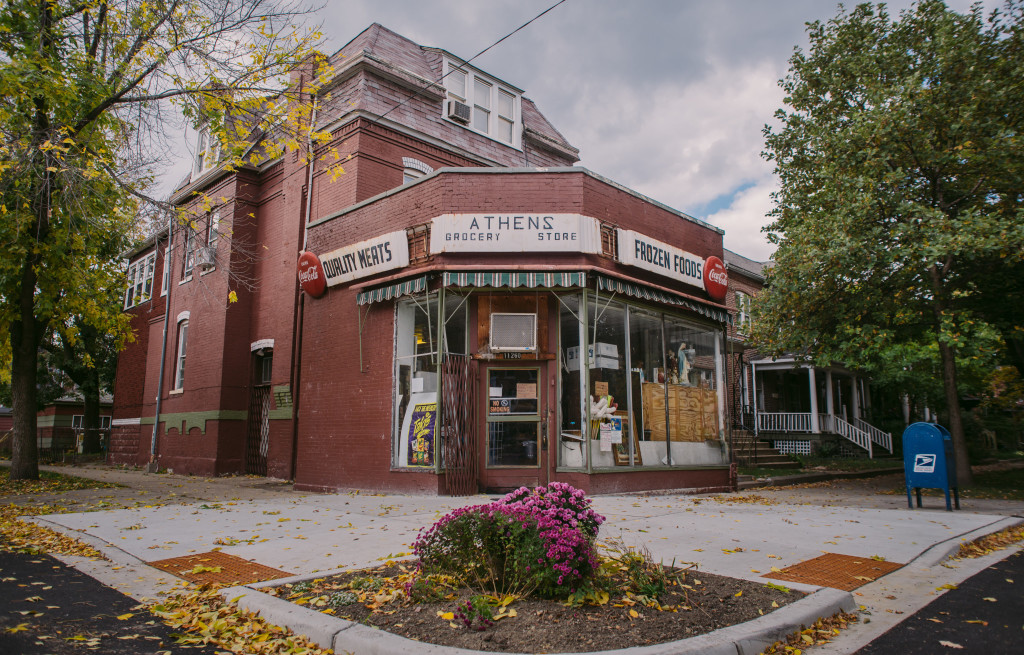
Best Boat-Grown Veggies
Cooperation Operation
With vegetables growing in ski-boats and a terradome made out of bicycle wheels, the Cooperation Operation (Coop Op) may at first look more like a carnival than a vegetable garden. Colorful tires and sunflowers line the main entryway, and a vibrant bus covered entirely in scribbles greets visitors at the front. The large abandoned lot—a former Sherwin-Williams paint waste processing center—now houses this fantastical community garden, which has sprung up through the efforts of community organizers. Although the soil is still laced with toxins, volunteers have built raised vegetable beds from a variety of repurposed materials, including boats slated for demolition and dock wood from Calumet fisheries. The Coop Op-ers are hoping to heal the soil using natural mushroom remediation treatment so that they can eventually plant food on the entirety of the lot. For now, cucumbers, raspberries, grapes, beets, kale, cabbages, asparagus and more thrive in the raised beds. “Our largest focus is education,” says Liz Nerat, one of the garden’s lead organizers. “We want to provide food and knowledge to locals in an area that is still a food desert.” Schools from all over the city bring students here to learn about sustainability and gardening, and anyone who helps out with garden tasks is allowed to take some fresh veggies back home.
The Cooperation Operation, 652 E. 114th Street. Volunteer open hours Monday–Friday, 10am–3pm. cooperationoperation@gmail.com Facebook page coopop.org (Amelia Dmowska)
Best Fried Crustaceans
Hienie’s Shrimp House
A comfort food staple of the South Side since 1947, Hienie’s Shrimp House still emanates a mom-and-pop feel. Furnished with three four-person diner-style booths, Hienie’s is staffed minimally, with two cooks in the kitchen and one person at the counter. Hienie’s menu features fried fare that extends far beyond shrimp to fish (perch), chicken, and pizza (cheesy), all of which deserve equal attention in the restaurant’s name. Most items are priced between six and twelve dollars; many come with fries and a particularly delicious coleslaw. The shrimp works well drizzled with many toppings, including Hienie’s signature tangy hot sauce. The fish is proportionately sliced and breaded to offer a good crunch with tender texture. The fried chicken is a popular choice among those ordering, and Hienie’s storied old-style fried chicken, which takes almost half an hour to prepare, certainly calls for a return trip.
Hienie’s Shrimp House, 10359 S. Torrence Ave. Sunday–Thursday, 10am–11:30pm; Friday and Saturday, 10am–12:30am. Average entrée $6-$12. (773) 734-8400
(Brian Choo)
Best Backyard Bee Hives
Pullman Apiary
Other than an inconspicuous sign proclaiming “Local Honey” nestled in the corner of a window, Marc Korton’s house blends into the string of other historic row houses on Champlain Avenue. His backyard, however, is like none other in Pullman. Amidst soaring bushes and flowers, about two dozen bee hives adorn the perimeter of the back gate. Stacked on top of one another like colorful shoe boxes, the hives attract swarms of bees which form a thick cloud that gradually dissipates with distance. What started as two hives twenty-four years ago has turned into the Pullman Apiary of today: thirty bee hives and 1,500–2,000 pounds of honey produced per year. According to Korton, the bees survive fairly well in the city, and his neighbors in Pullman have seemed to accept them. Even though regulations control the exterior of the houses, the backyard “isn’t anyone’s business.” With goldenrods blooming in the neighborhood, Marc expects the honey’s taste to turn stronger and more pungent as summer dwindles down. Through their local pollination, Korton’s honey truly absorbs the varied and distinctive wildflowers, scents, and flavors of Pullman.
Pullman Apiary, 11117 S. Champlain Ave. Local wildflower honey from $4/bottle. (773) 660-9541 (Amelia Dmowska)
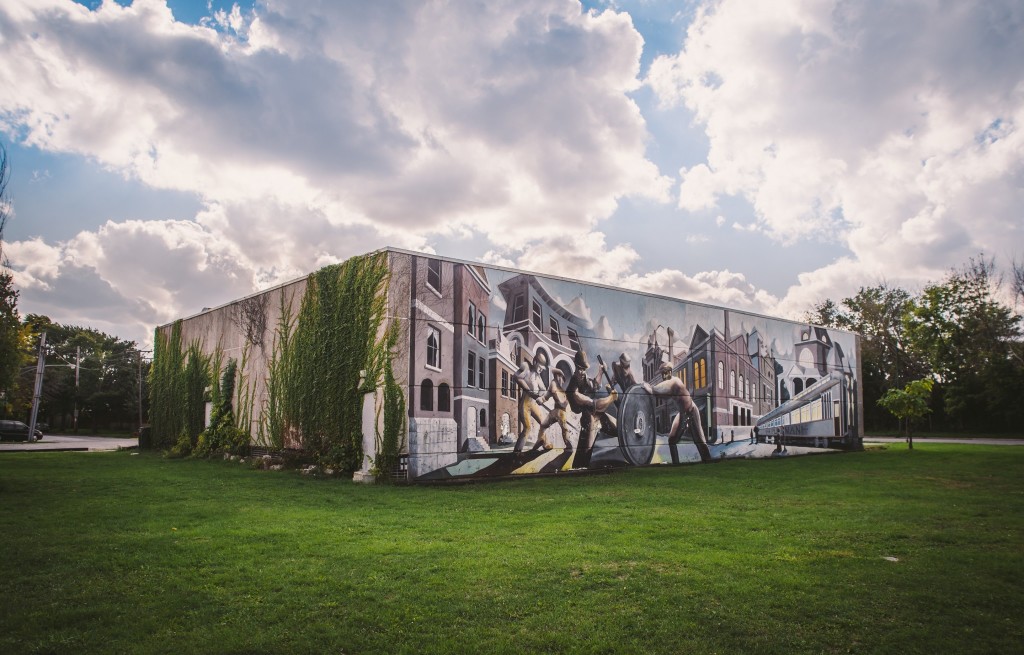

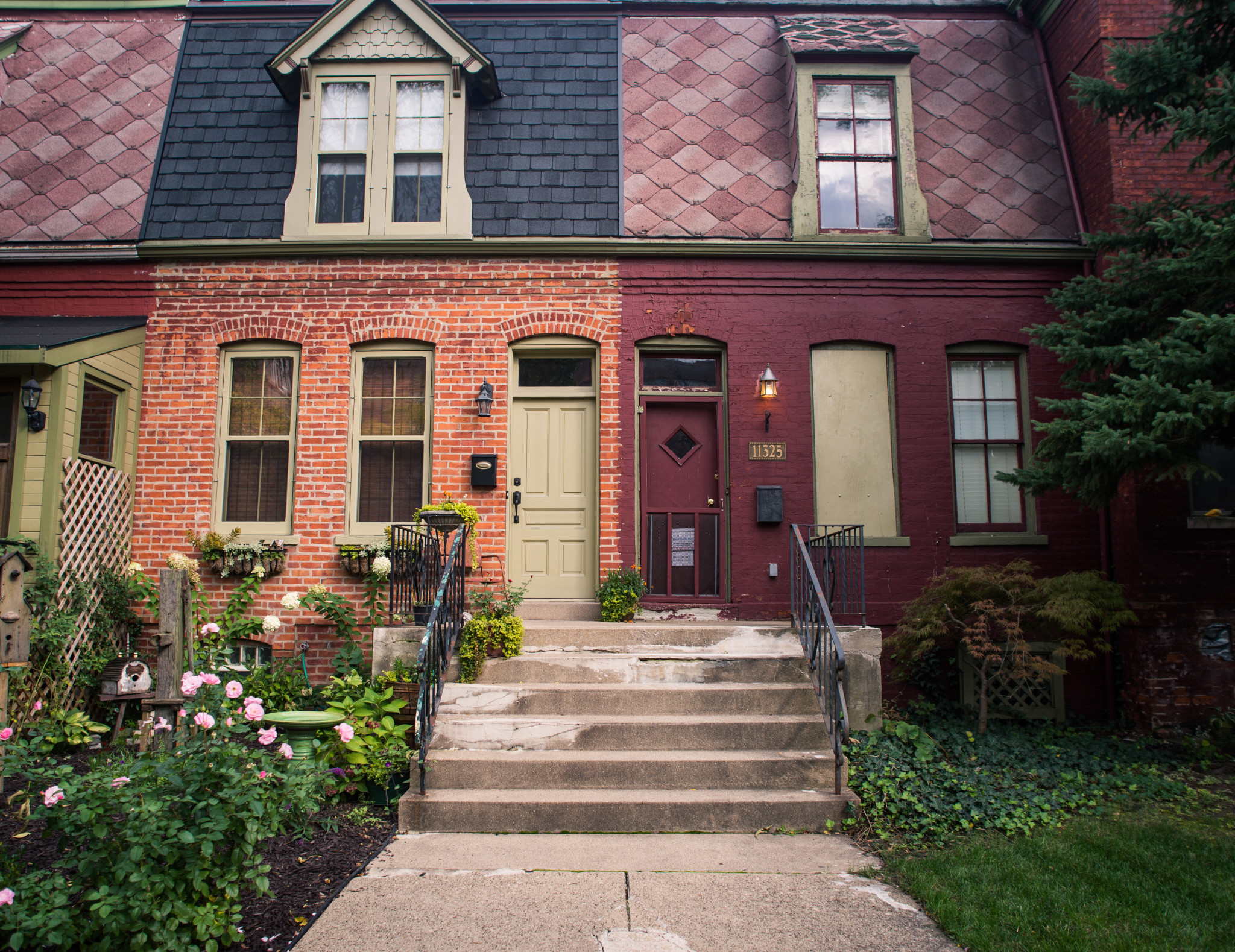
Would very much appreciate being added to your mailing list. As a former southsider (Roseland) I am very much interested in what is happening in the area today. Enjoyed the above articles on Roseland and Pullman very much. My paternal grandfather was an employee of the Pullman shops as were several other members of my family. I was raised in Roseland and lived there until I was 15. All of my family on both sides were born and raised on the southside – the majority of them in Roseland.
Love this. Lived there 42-73
Growing up in Pullman was the best time and going back for visits is a must .
Thank you so much for the great article and pictures. It really is wonderful to see my old home town coming back to life. I lived in Roesland and had relatives who lived in Pullman row houses. So nice.
Grew up in Pullman. My dad owned the 580 Club for many years on 10015 St Lawrence. Happy to see the old neighborhood come back to life. Many good memories.
I was born and raised in Pullman. My parents were Bruno DeNardi who lived in the 111th & Langley blockhouses. Mom, Florence Manzardo DeNardi was born in Kenzington (next door to Elliott Ness I Might add), then moving to 11236 St. Lawrence where she and dad moved after they married in 1937. I came along in 1941, another sister Michaelene in 1945 and Deborah in 1950. We loved the ideal town of Pullman growing up… It was the best. It will always be our home.
Was born & raised in Roseland.Went to school there St. Anthony of Padua.
I totally enjoyed reading your articles. I feel better about roseland and pullman than ever before…
I lived for a brief time above a store on on 110th and Michigan . Who remembers Bestever Tile and Linoleum om 111th and Halsted. ?- Husband’s Family
Lived on 114th street at St Lawrence, among other places in Pullman and Roseland area. I enjoy the pictures and stories about my home town.
I grew up in Pullman, lived on the corner of 114th and Langley (11357)
along with assorted family members in the three apartment building my grandfather owned. I came back to visit in Fall 2015, and have to say, the vibe of the place was amazing. Please add me to any and all email accounts Pullman and Roselandites send out. I love hearing about Pullman and the vibrant community it has become.
Grandparents and parents lived/worked in Pullman. Then parents moved to Roseland. I went to Curtis/Fenger and worked at Monarch Laundry after school. I’m reading Stanley Buder’s book entitled PULLMAN – miss the old neighborhood !
My Mother’s family came from Amsterdam in the 1880’s to Roseland. Their name was Pennykamp. I am doing research on the family. So I found your site very informative. what happened to the What happened to the Eenigenburg Museum. Does it still exist?